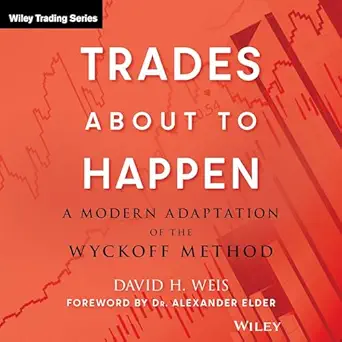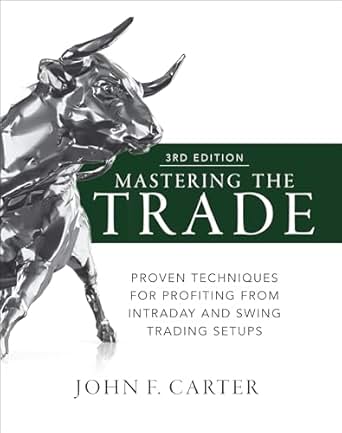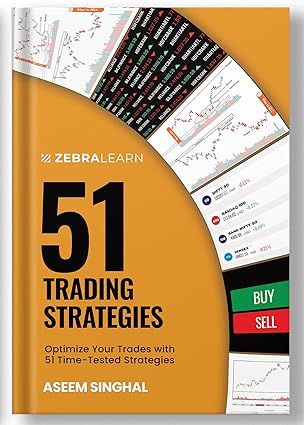David H. Weis’s Trades About to Happen: A Modern Adaptation of the Wyckoff Method serves as a comprehensive guide for traders seeking to apply Richard Wyckoff’s time-tested principles to contemporary financial markets. Weis, a seasoned trader and market analyst with nearly four decades of experience, offers a detailed exploration of Wyckoff’s methodologies, emphasizing the importance of price and volume analysis in understanding market dynamics. This summary delves into the core concepts presented in Weis’s work, highlighting the practical applications of the Wyckoff Method and its relevance in today’s trading environment.
Introduction to the Wyckoff Method
Richard D. Wyckoff, a pioneer of technical analysis in the early 20th century, developed a systematic approach to studying market behavior through the interplay of price, volume, and time. His method focuses on understanding the intentions of dominant market players—often referred to as the “composite operator”—by analyzing their actions reflected in price movements and trading volumes. Weis’s adaptation of the Wyckoff Method retains the essence of this approach, providing traders with tools to interpret market signals and anticipate potential trading opportunities.
Core Principles of the Wyckoff Method
- The Law of Supply and Demand: This fundamental principle posits that when demand exceeds supply, prices rise, and when supply surpasses demand, prices fall. By analyzing price and volume data, traders can gauge the balance between supply and demand, aiding in predicting future price movements.
- The Law of Cause and Effect: Wyckoff suggested that trading ranges (the “cause”) lead to trends (the “effect”). The duration and characteristics of a trading range can provide insights into the potential magnitude and direction of the subsequent price movement.
- The Law of Effort versus Result: This principle examines the relationship between trading volume (effort) and price movement (result). A significant price change on high volume indicates a strong move, whereas a substantial effort with minimal result may signal a potential reversal.
Constructing Intraday Wave Charts
Weis emphasizes the utility of intraday wave charts, a technique pioneered by Wyckoff, to capture the ebb and flow of price movements within a trading session. These charts focus on price swings, filtering out minor fluctuations to reveal the underlying market trend. By constructing wave charts, traders can identify key support and resistance levels, assess the strength of price moves, and detect potential turning points.
Drawing Support and Resistance Lines
Identifying support and resistance levels is crucial in anticipating market reactions at specific price points. Support represents a price level where buying interest is strong enough to prevent further decline, while resistance denotes a level where selling pressure may halt an advance. Weis guides traders on accurately plotting these lines on their charts, considering factors such as the frequency of price interactions and the volume associated with these levels.
Interpreting Trading Ranges
Trading ranges, periods where prices oscillate within a confined range, signify a phase of accumulation or distribution by the composite operator. Weis delves into the characteristics of these ranges, helping traders discern whether the market is preparing for an upward breakout (accumulation) or a downward breakdown (distribution). Recognizing the signs of accumulation or distribution enables traders to position themselves advantageously ahead of significant price moves.
Recognizing Action Signals at Turning Points
Weis highlights specific patterns and signals that often precede market reversals:
- Springboard (Spring): A scenario where the price briefly dips below a support level and then quickly rebounds, indicating a potential bullish reversal.
- Upthrust: Occurs when the price moves above a resistance level but fails to sustain, subsequently reversing downward, suggesting a bearish reversal.
- Climactic Action: Characterized by a sharp price move accompanied by high volume, often signaling the exhaustion of the current trend and a possible reversal.
Emphasizing Price and Volume over Mathematical Indicators
While modern trading platforms offer a plethora of mathematical indicators, Weis advocates for a return to the basics: analyzing raw price and volume data. He argues that over-reliance on derived indicators can obscure the true market picture. By focusing on price bars and volume histograms, traders can develop a more intuitive sense of market dynamics and make more informed trading decisions.
Study Guide and Practical Application
To reinforce the concepts discussed, Weis includes a study guide in the appendix of his book. This section presents practical exercises and real-market examples, encouraging traders to apply the Wyckoff Method in various scenarios. By engaging with these exercises, traders can hone their analytical skills and build confidence in their ability to interpret market signals accurately.
Conclusion
Trades About to Happen serves as a bridge between the foundational principles of Richard Wyckoff and the realities of modern financial markets. David H. Weis’s adaptation offers traders a structured approach to deciphering market behavior through meticulous analysis of price and volume. By embracing the techniques outlined in this work, traders can enhance their market acumen and position themselves to identify and act upon trades poised to unfold.


“Start Your Website Journey Today – Exclusive Hostinger Discounts!”







